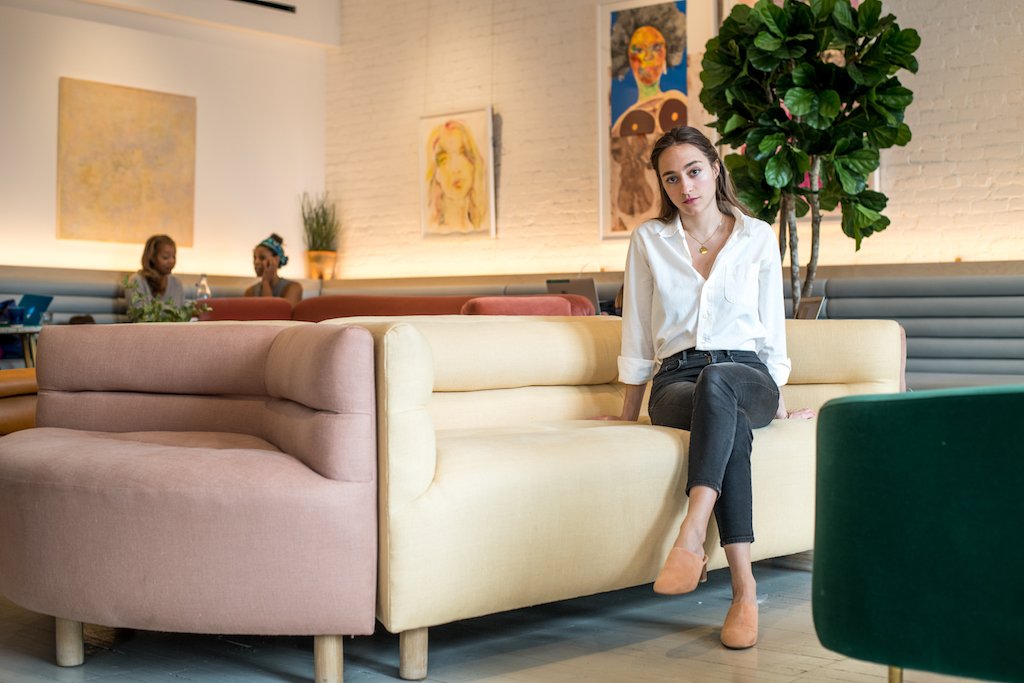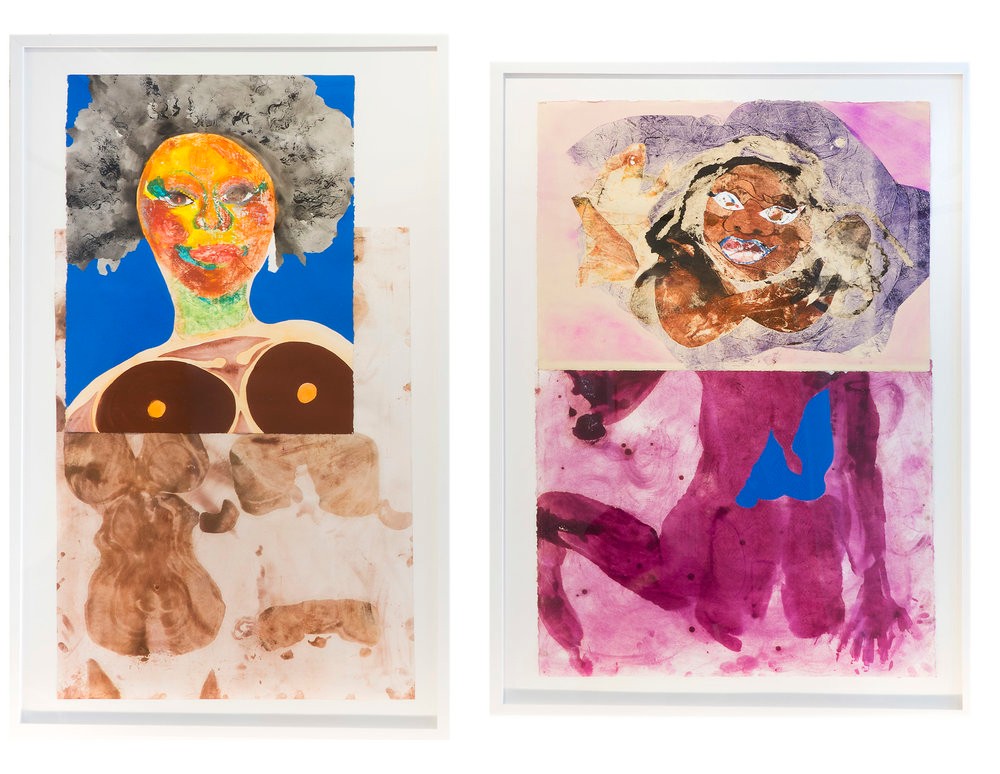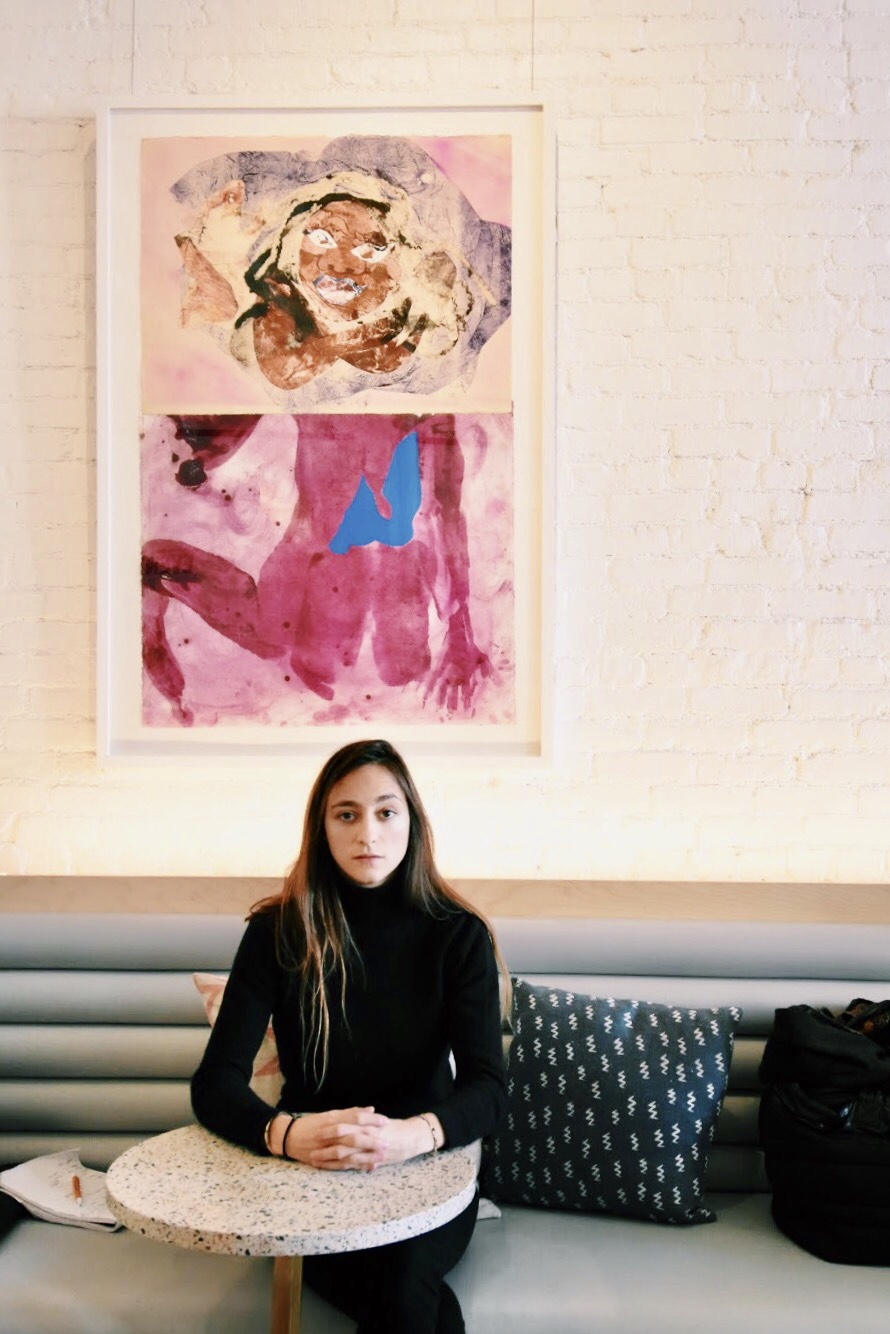The Wing’s Curator Tells Us How to Start Your Own Art Collection and What “Female” Art Actually Means

LOLITA CROS is the young and trending curator you may have read about in publications like Artsy, Vogue, and W Magazine, best known for being the artistic brain behind The Wing’s current and upcoming art collections at its women’s co-working spaces in New York City and Washington D.C.—which include over 135 curated artworks of female artists including Marilyn Minter, Jenny Holzer, and Senga Nengudi, among many others. Born in Paris and raised in New York, Cros started her career as an art dealer at an early age. She studied art history at Bard College and fell immediately in love with the subject, scheduling studio visits with her classmates and curating her own shows upstate. By her senior year, she decided to take the plunge by curating her first show in New York City. “I thought, if I want to be a curator, it’s easy to do a show in an empty apartment in upstate New York—but can I do that in the city?” she says.
Cros’ first show in New York was a silent auction that helped raise charity for the victims of Hurricane Sandy. Located in an unconventional space—a Chinese restaurant—she curated a show with works from classmates and noteworthy artists like Dustin Yellin, Jemima Kirke, Dean Levin, Tschabalala Self, and Sebastian Black, who generously donated their works for the occasion. “People would come see the show because the big names attracted them in the space, and they would leave buying pieces from the younger artists,” she says. “The piece that was probably the most successful got sold for three times the estimated price—it was a beautiful painting by a 19 year old artist who was a freshman in college—and that was my biggest pride. We got to sell something that I thought was really strong.” After selling majority of the works from the show, Cros became confident in her abilities to become a professional curator. Sitting at The Salon in The Wing’s Soho location, we have a conversation with Cros where she discusses emerging artists, how to start your own art collection, and breaking the stereotype of what “female art” actually means.
What is the role of a curator?
The way I see it, the role of a curator is to translate an artist’s mind and offer a certain perspective on it. I don’t think one perspective is the only one to be seen but I think if you’re an artist making work around architecture, for example, there are different ways you can approach that theme. For example, you can talk about architecture in a public space and how it affects people, or you can talk about architecture in art history and how churches were made. So my role, I would say, is to translate and offer a new perspective for an audience so that they can understand the work of the artist that I’ve been looking at and interested by.

WHY IS ART IMPORTANT TO YOU?
Art is important to me because I realized very quickly that I’ve learned history through the lens of art. I understood World War II and the inhumane through art and all the movements that came from it. I ask myself a lot of questions when it comes to politics, and I like the way artists deal with that. I like that they don’t necessarily write papers about it but their pieces could very much be a paper in and of itself. Art is a mix between higher power and constant inspiration. I think the sublime is something that we all need, and when people don’t have the sublime they usually go to religion—which I don’t really connect with. I connect with the higher power of the intellect and what an artist can make me feel and understand about something that my brain couldn’t make sense of.
How did you start curating only female artists?
After my first show in New York, I did a show once a year. That was the goal I set for myself because, I wasn’t sustainable at first, so I had to get a job and curate on the side. Every time I did a group show, without even thinking about it, it was always 50% male and 50% female. I don’t really see female artists as “female artists,” I just see them as artists, good or bad. It just so happens that there are really good female artists in the world so I would always end up being really equalitarian. I also curated three solo shows with female artists, which were great, and then I started working with The Wing in 2017, so exhibiting female art was the requirement. I started gathering all the names that I had been learning in school, artists that I had worked with in the past or known socially, and artists who I’ve always wanted to work with. It was a really funny requirement to only be working with certain people, and because I’m a woman, I have a very specific idea about what “female art” is and to me, there’s no such thing as female art, so I wanted to really be clear with that when I made the selections. For instance, there was a client talking about female artists—because now everyone wants to buy female artists—and she said: “You know, I want female artists, but I don’t want vagina art.” And I was kind of like okay, so we still have some work to do.

"Art is a mix between higher power and constant inspiration. I think the sublime is something that we all need, and when people don’t have the sublime they usually go to religion—which I don’t really connect with. I connect with the higher power of the intellect and what an artist can make me feel and understand about something that my brain couldn’t make sense of." —Lolita Cros
What do a lot of people think "female art" is?
I think a lot of people think about works on paper and delicate work. Which some are, but not all of them. They think about watercolors, pink, depicting women, depicting Georgia O’Keeffe, flowers and vaginas, talking about issues of being a woman, talking about struggle with motherhood—whereas like some artists literally couldn’t care less about being a woman. There are some artists we have in this space that make work about geology, others make work about landscape scenes from above and how that has affected their perspective of the land. For example, Carly Burnell’s work has nothing to do with being a woman. I’m sure her being a woman has impacted her work, but it’s not what it’s about. I’m not against it at all—we have great artists who depict women, like Laurie Simmons, Tschabalala Self, or Kim McCarty, but I still think we need to show a diversity in the same way that an all male show—which by the way literally happen all the time without it even being called an “all male show”—don’t really bring up that aspect, even though being a male is very much a part of it.
For example Chris Burden, his work is all about so much of that masculinity, as well as land artists, which are such a good example of a macho time frame. Nancy Holt is the only land artist I know who’s a female and who was in a relationship with another land artist whose work was much more talked about than hers just because he was male. When I select artworks for an all women show I really make sure that we cover the paintings, the sculptures, the artworks on paper, the more conceptual word or text base pieces, the silkscreen, photography—really a wide range of mediums to remember the diversity of women in the arts.
WHAT DOES "GOOD ART" MEAN TO YOU?
Good art is when you can write a ten page paper about the piece. When it connects with you on a deeper level than just “it looks good, it reminds me of this.” It has to be more of a bigger conversation like how you would describe a good movie. You know it’s a good movie when you’re still thinking about it a week later. It’s kind of the same thing with art. That’s sort of what I’m trying to say to young collectors and people who feel shy around art: that we read a book and laugh, we watch a movie and cry, we listen to music and dance to it—for some reason that genuine connection with fine art is not happening as casually and so I’m trying to make that more of a thing and let people know that you can laugh while looking at an art piece, you can even cry at it, and you can have goosebumps. You just have to let go and not worry about other people around you who you might think are judging you for not knowing who this artist is, That’s what I’m trying to break. A good piece is something that you should be able to connect with on a deeper level than just a physical level.

What are some other elements you think about when curating for The Wing?
Sometimes I do it based on the artists’ dialogue but it depends on the space. There’s a room in D.C. that I curated called the Tropical Room, and for that one I knew it was going to look out the water and trees so I tried to make it between the interior and exterior. You have to think about the fact that this is in a room with furniture around it, the furniture is probably going to be very pink or very colorful. I use the furniture for the paintings, so in the furniture if the piece is blue with some gray, I might want to make the painting grey so that grey pops out. I usually ask the Interior designer to send the furniture plan to figure out what’s going to go where, just so I can really use the colors and the pigments from the furniture in the best interest for the painting. People don’t realize how it affects the way they look at the art. It’s all very subtle and it’s all to play in the favor of the art.
What are some of the differences between the art market in Paris and New York?
People ask me that a lot. It’s interesting because I think Paris and France is changing a lot right now because of the new president [Emmanuel Macron]; I think he’s basing his politics around American politics—he’s trying to be much more capitalist and promoting of young talents and young entrepreneurs; and art is very much about that. Art is about supporting young artists who eventually become big artists. I think it’s going to be changing a little bit more in France when people are going to start buying a little bit more, whereas it’s not something that they do right now. It’s interesting also, because France’s number one money-maker is luxury. All these big brands, LVMH, Chanel, Dior, Hermès—are really what’s bread-winning, yet art hasn’t really been at the top of that. I feel like people see art as way too expensive than what it should be and they haven’t really tapped into it. Right now the market is definitely not as high as it is here in New York and people don’t buy as much because they don’t get paid the same as they do here and taxes are really high.

What was the first artwork you ever bought?
The first artwork that I ever bought was from Jayson Musson, who was at Salon 94. It was his first solo show, and it was a tiny piece that I thought was so funny in the way he came up with it—basically the whole show was Coogi sweaters. They were stretched on canvases and right before the show opened he used a lint roller and started going over all the pieces. Then he threw the pieces from the lint roller in the garbage, and then looked at them and he was like, “These are pretty beautiful.” So he decided to pick some of them out and frayed them and he was like, “These are super cheap, we can sell them, people can have a piece.” So whenever I look at this unique piece that I ended up buying, I just think about the whole picture, I think about the whole show. I must have been like 19 at the time so it was a really big deal for me to buy my first artwork and now I’ll have it for the rest of my life.
What piece of advice can you give to people who are buying art for the first time?
It’s funny because I’m starting to talk to those people. There’s a member here at The Wing who saved up a bunch of money to buy this one work from an artist that we have in the Dumbo location. She’s been eying it for a while and just started saving some money and eventually when she was ready she got a piece. I think it’s about connecting with something. I don’t think people should buy “the best of.” There’ve been some collectors who have come up in the past to me and say, “oh I want this, because I own this, this, and this artist,” and it was like the hot artist of the moment that everyone else had. I don’t think you should buy art because someone else has it and you want the same collection the same way you shouldn’t buy shoes because someone else has them. I don’t think art is about that, it’s not a trend, you should connect with it deeply for whatever reason.
When I started my art collection I would go into studio visits and just fall in love with an artist. There was a studio visit that I had with one artist for two and a half hours—it was one of the longest one I’ve been to—and I just had to buy something. I had to remember this conversation, I had to remember what this artist stands for, and the chills that she gave me when she talked about certain pieces and certain aspects of her work. So I think it should be something that you connect with and the money should be separated from it. There are people out there that either price their pieces way too high or way to low. It’s my job also as an art dealer to advise the artist on how to price their work. I think that’s another part that’s hard for people. People are afraid to buy stuff when the price is not displayed or when it doesn’t have a “for sale” sign on it.

How to female artists generally value their work?
It’s funny because I was thinking about the value of female art recently and how people looked at them as being “cheap.” Really what’s happening is that they’ve been putting a cheap price on their pieces because we’re not realizing that they haven’t been valued at their worth. People associate price and quality when they should be looking at quality and come with the price later. I think men don’t think twice, they’re risk-takers, and they’re raised as being risk takers and women feel like they’re not worthy of a certain price because they don’t just go for it. The amount of times I told artists to put their price higher is insane. Even established artists, I was shocked to see the prices of certain established artists that I work with, and having worked with male emerging artists before and comparing those prices—there’s not much of a difference. It’s interesting because I never questioned why a male artist determined his price, whereas with a female artist I’m more likely to be like, it could be much more expensive.
Name your favorite female artists of the moment.
Nancy Holt, Lynette Yiadom-Boakye, and Marilyn Minter are amazing. Also Billie Zagewa—she’s a South African artist who’s really hot right now. I’ve been trying to get her in The Wing for so long.
What is the best piece of advice you’ve ever received?
Don’t take things personally.
Top Image: Photo courtesy of Alyssa Greenberg.
Lolita Cros is based in New York City. Visit her website: www.lolitacros.com.


